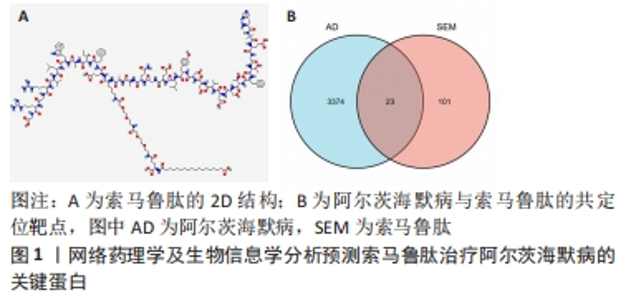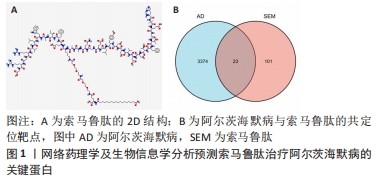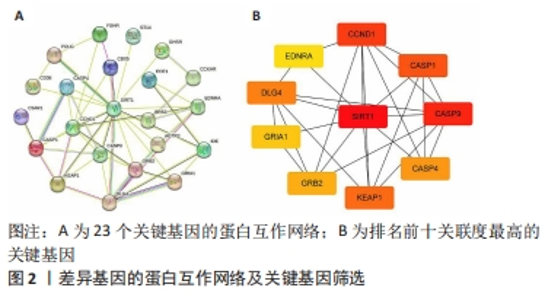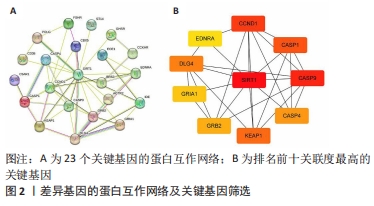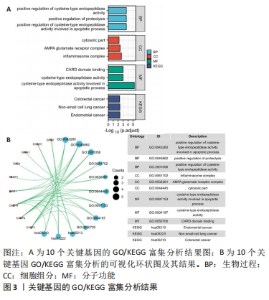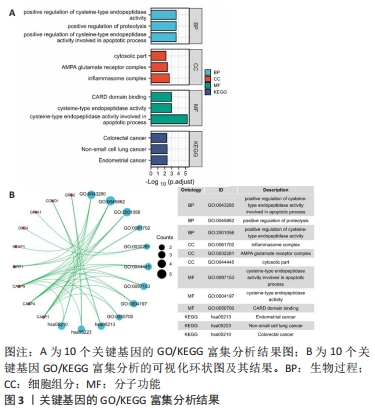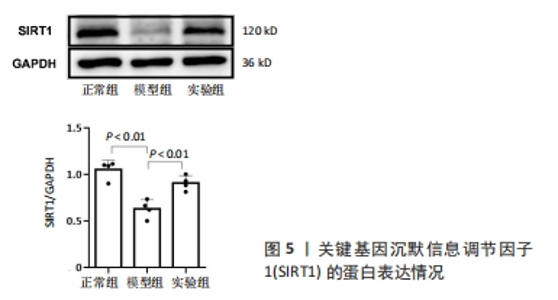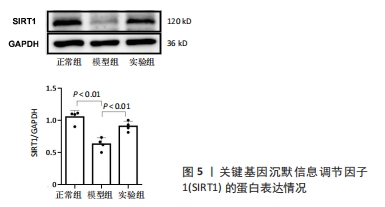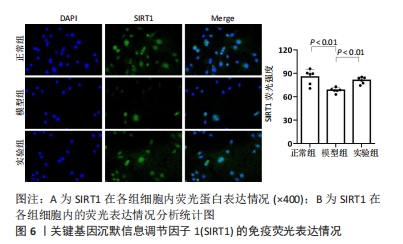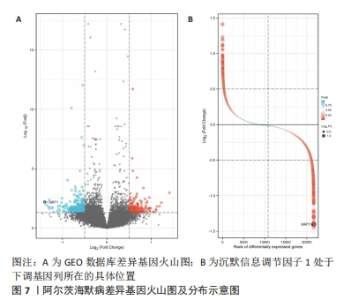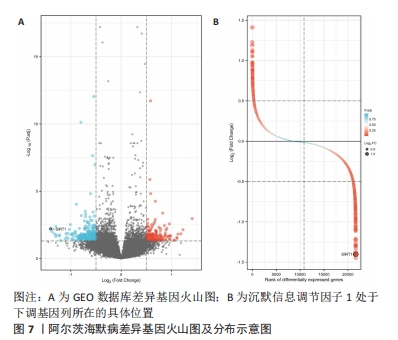[1] BREIJYEH Z, KARAMAN R. Comprehensive Review on Alzheimer’s Disease: Causes and Treatment. Molecules. 2020;25(24):5789.
[2] LEI P, AYTON S, BUSH AI. The essential elements of Alzheimer’s disease. J Biol Chem. 2021;296:100105.
[3] GBD 2019 DEMENTIA FORECASTING COLLABORATORS. Estimation of the global prevalence of dementia in 2019 and forecasted prevalence in 2050: an analysis for the Global Burden of Disease Study 2019. Lancet Public Health. 2022;7(2): e105-e125.
[4] BOURNE PE. Is “bioinformatics” dead? PLoS Biol. 2021;19(3):e3001165.
[5] KOCH I, ANDRADE-NAVARRO M, SCHULZ MH, et al. Bioinformatics in theory and application - highlights of the 36th German Conference on Bioinformatics. Biol Chem. 2021;402(8):869-870.
[6] SUN BL, LI WW, ZHU C, et al. Clinical Research on Alzheimer’s Disease: Progress and Perspectives. Neurosci Bull. 2018;34(6):1111-1118.
[7] ARMSTRONG RA. Risk factors for Alzheimer’s disease. Folia Neuropathol. 2019; 57(2):87-105.
[8] ZHANG H, ZHENG Y. β Amyloid Hypothesis in Alzheimer’s Disease: Pathogenesis, Prevention,and Management. Zhongguo Yi Xue Ke Xue Yuan Xue Bao. 2019;41(5): 702-708.
[9] BARAGE SH, SONAWANE KD. Amyloid cascade hypothesis: Pathogenesis and therapeutic strategies in Alzheimer’s disease. Neuropeptides. 2015;52:1-18.
[10] HAMPEL H, MESULAM MM, CUELLO AC, et al. Revisiting the Cholinergic Hypothesis in Alzheimer’s Disease: Emerging Evidence from Translational and Clinical Research. J Prev Alzheimers Dis. 2019;6(1):2-15.
[11] DINIZ PEREIRA J, GOMES FRAGA V, MORAIS SANTOS AL, et al. Alzheimer’s disease and type 2 diabetes mellitus: A systematic review of proteomic studies. J Neurochem. 2021;156(6):753-776.
[12] LESZEK J, TRYPKA E, TARASOV VV, et al. Type 3 Diabetes Mellitus: A Novel Implication of Alzheimers Disease. Curr Top Med Chem. 2017;17(12):1331-1335.
[13] KNUDSEN LB, J LAU J. The Discovery and Development of Liraglutide and Semaglutide. Front Endocrinol (Lausanne). 2019;10:155.
[14] FRÍAS JP, DAVIES MJ, ROSENSTOCK J, et al., Tirzepatide versus Semaglutide Once Weekly in Patients with Type 2 Diabetes. N Engl J Med. 2021;385(6):503-515.
[15] SHEN P, DENG X, CHEN Z, et al. SIRT1: A Potential Therapeutic Target in Autoimmune Diseases. Front Immunol. 2021;12:779177.
[16] CHEN C, ZHOU M, GE Y, et al. SIRT1 and aging related signaling pathways. Mech Ageing Dev. 2020;187:111215.
[17] YANG Y, LIU Y, WANG Y, et al. Regulation of SIRT1 and Its Roles in Inflammation. Front Immunol. 2022;13:831168.
[18] MAROGIANNI C, SOKRATOUS M, DARDIOTIS E, et al. Neurodegeneration and Inflammation-An Interesting Interplay in Parkinson’s Disease. Int J Mol Sci. 2020; 21(22):8421.
[19] STUCKEY SM, ONG LK, COLLINS-PRAINO LE, et al. Neuroinflammation as a Key Driver of Secondary Neurodegeneration Following Stroke? Int J Mol Sci. 2021; 22(23):13101.
[20] BATISTA CRA, GOMES GF, CANDELARIO-JALIL E, et al. Lipopolysaccharide-Induced Neuroinflammation as a Bridge to Understand Neurodegeneration. Int J Mol Sci. 2019;20(9):2293.
[21] CALSOLARO V, EDISON P. Neuroinflammation in Alzheimer’s disease: Current evidence and future directions. Alzheimers Dement. 2016;12(6):719-732.
[22] JIAO F, GONG Z. The Beneficial Roles of SIRT1 in Neuroinflammation-Related Diseases. Oxid Med Cell Longev. 2020;2020:6782872.
[23] YU Q, DONG L, LI Y, et al. SIRT1 and HIF1α signaling in metabolism and immune responses. Cancer Lett. 2018;418:20-26.
[24] HWANG JW, YAO H, S CAITO S, et al. Redox regulation of SIRT1 in inflammation and cellular senescence. Free Radic Biol Med. 2013;61:95-110.
[25] ZHANG W, XIAO D, LI X, et al. SIRT1 inactivation switches reactive astrocytes to an antiinflammatory phenotype in CNS autoimmunity. J Clin Invest. 2022;132(22): e151803.
[26] SUN M, YANG Q, HU C, et al. Identification and Validation of Autophagy-Related Genes in Sepsis-Induced Acute Respiratory Distress Syndrome and Immune Infiltration. J Inflamm Res. 2022;15:2199-2212.
[27] CHEN Q, LIU L, NI S. Screening of ferroptosis-related genes in sepsis-induced liver failure and analysis of immune correlation. PeerJ. 2022;10:e13757.
[28] YU M, ZHOU M, LI J, et al. Notch-activated mesenchymal stromal/stem cells enhance the protective effect against acetaminophen-induced acute liver injury by activating AMPK/SIRT1 pathway. Stem Cell Res Ther. 2022;13(1):318.
[29] ROSS AG, CHAQOUR B, MCDOUGALD DS, et al. Selective Upregulation of SIRT1 Expression in Retinal Ganglion Cells by AAV-Mediated Gene Delivery Increases Neuronal Cell Survival and Alleviates Axon Demyelination Associated with Optic Neuritis. Biomolecules. 2022;12(6):830. |
